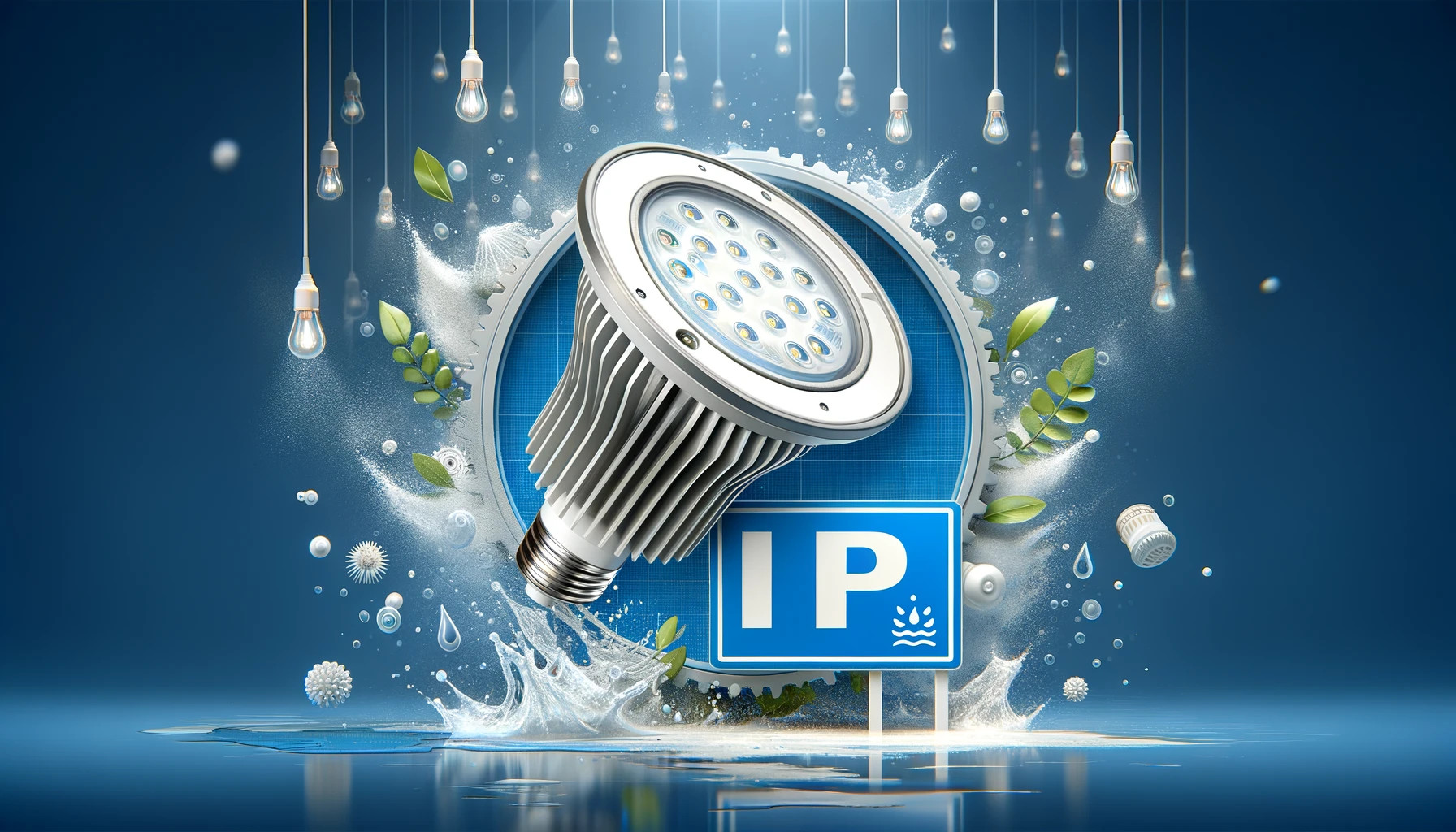When purchasing LED lights for your home and office, you’ll often encounter the words IP followed by two digits in the product’s specifications. Though it is something not many pay attention to, these numbers impact the device’s durability and reliability and measure its ability to withstand dust and water.
If you want to purchase the right lights, you need to understand what IP is and what it signifies, and this blog post will help you learn everything you need to know! Read on and find out.
Explaining IP ratings
A standard established by the International Electrotechnical Commission, the Ingress Protection Code (IP Code) measures electronics’ ability to withstand water and dust. An IP rating consists of two digits that signify the level of protection the device provides. The first digit denotes the device’s protection against solid particles and the second digit denotes protection against liquids. Common IP ratings include IP54, IP66, and IP67.
IP ratings start from 00, which describes a device with no inherent protection against solid or liquid particles, and go up to 69, which describes a device that is dustproof and can withstand powerful water jets.
How important is the IP rating of my light fixtures?
Though it might sound technical, the IP rating of your lighting fixtures is very important. It has direct, practical impacts on their longevity, durability, and reliability that you should pay attention to:
Longevity
If the fixture doesn’t have the minimum IP rating to survive in an environment, then it’ll get damaged and usually quickly die when it is penetrated by dust or splashed by water. So, you’ll simply be wasting money if you don’t purchase the right fixtures with the correct IP rating as they inevitability break down!
Reliability
When an insufficient IP rating doesn’t result in the fixture getting damaged beyond repair, it harms it by lowering its luminosity and intensity. It might also result in random flickering and a variety of other side effects that make the light source unusable.
Practicality
The IP rating is important when considering the practical applications of an LED fixture. This isn’t just common applications like whether a fixture is more useful as a bathroom or outdoor lighting, but lighting used for horticulture, for example, needs a high IP rating to withstand the hot and humid environment inside greenhouses.
Common IP ratings for LED lights
Choosing the right lighting fixtures isn’t easy. You have to consider size, style, and luminosity, but the IP rating adds another dimension of complexity on top of that, and this can leave homeowners frustrated and confused.
This is why we’ve compiled a list of the most common ratings you’ll find on the market, what they offer, and what are their downsides!
IP22
IP22 is decent baseline protection to aim for when purchasing LED lighting. IP 22 means the device withstands basic physical contact like touching, and it has rudimentary protection against the ingress of water and can withstand drizzles and light rain.
IP22 is sufficient for basic indoor lighting and sheltered outdoor lighting that’s not directly exposed to the elements.
IP44
IP44 represents the midrange of the Ingress Protection Code. It describes a fixture that has protection from small visible solid objects like wires, screws, and ants and can withstand being directly splashed by water for a brief period.
IP44 light fixtures are perfectly suitable for outdoor use, though they generally don’t have enough protection to be used in a bath or shower!
IP65
IP65 is another common type you’ll encounter when shopping around for fixtures. A light panel with IP65 is dust-tight, meaning that it doesn’t allow for any dust ingress, and it can also withstand water splashes and jets.
An IP65 light isn’t substantially more waterproof than an IP44 light, but the protection against dust it provides makes it a solid choice for outdoor lights, especially in warmer and drier climates.
IP68
A fixture rated IP68 provides the same level of protection against solid objects that an IP65 light provides, but it is virtually completely waterproof for normal household applications: The light can be completely submerged to a depth of 3 meters without any damage to the electrical equipment.
IP68 lights aren’t common, but they do have their applications. Lights installed in swimming pools are often either IP68 or IP69, for example!
What is the right ingress protection rating for my light fixtures?
Where are you installing the light fittings?
Where you install the light fitting is an important factor in what kind of protection it needs. If you need outdoor or bathroom lighting, it needs to have a minimum IP rating of 44 to withstand dust and rain. If it is indoor lighting within an enclosed case, however, you can get away with lower IP ratings of 21 and 22.
What is the weather condition in your area?
The level of protection you need largely depends on the weather conditions in your region. If you live in a dry and windy environment, dust particles will not only be common but will harm and damage your light fixtures that don’t have adequate protection. On the other hand, if you live in the humid, wet climate that characterises the UK, you need to ensure the light fitting is at least IP-rated for rain and drizzles.
What is your budget?
Ensuring the lighting fixture has basic protection isn’t expensive. But, as you go up the ladder, the higher ratings require a lot of resources to attain and are only ever worth it on expensive appliances and electronics like phones, not outdoor lights. As an example, IP-rated 44 bathroom lights are easy to acquire and affordable, while IP-rated 68 lights are expensive and only ever used in specialised cases.
Carefully consider your requirements and budget and decide which IP rating makes sense for you! Bigger numbers aren’t always better!







